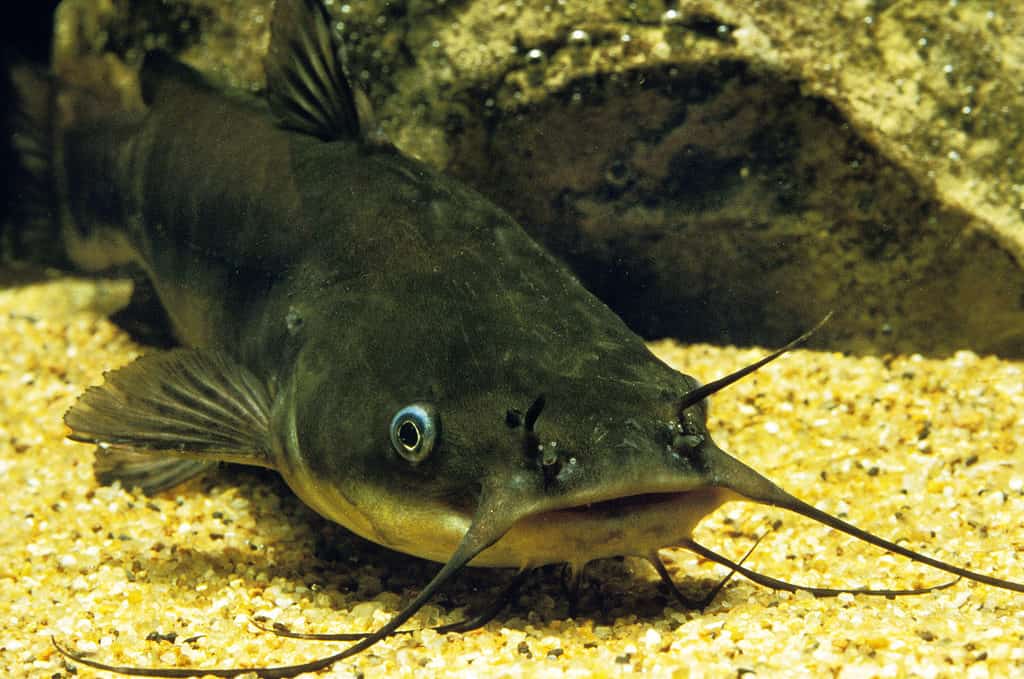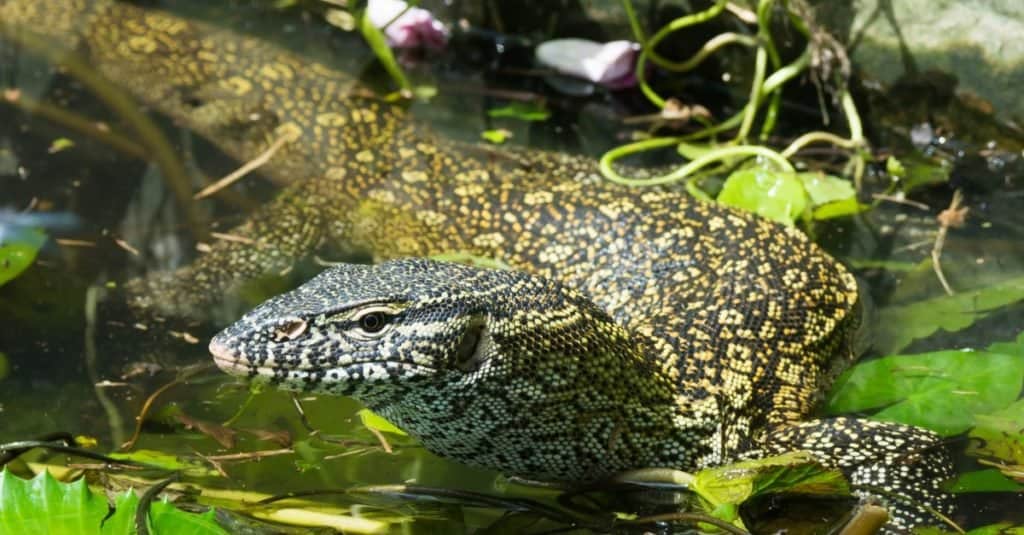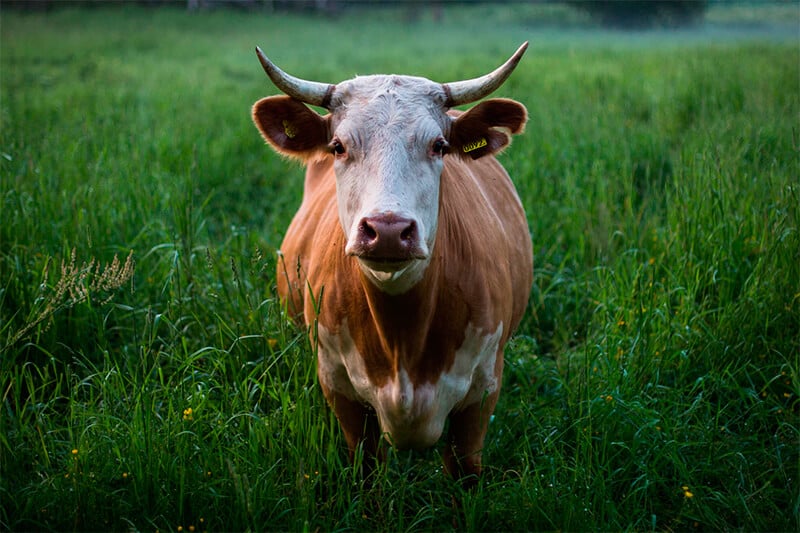Discover the Majestic African Fish Eagle: Journey Through Its Stunning Habitat and Conservation Story! 🌍🦅
African Fish Eagle Facts
PreyFish, small mammals, amphibians, reptiles, and birdsMain PreyFishName Of YoungEagletsGroup Behavior
- Pair
Fun FactAfrican fish eagles belong to the genus of sea eaglesEstimated Population Size300,000Biggest ThreatPollutionWingspan6.6 to 8 feetIncubation Period42 to 45 days
Age Of Fledgling 70 to 75 daysHabitatLarge bodies of water in Sub-Saharan AfricaDietCarnivoreLifestyle
- Diurnal
Favorite FoodFishSpecial FeaturesHooked bill, rough soles, and long talonsLocationSub-Saharan AfricaAverage Clutch Size3Nesting LocationTall trees
African Fish Eagle Physical Characteristics
-
- Color
-
- Brown
- Black
- White
Skin TypeFeathersLifespan12 to 24 yearsWeight4.4 to 7.9 pounds
Often referred to as the voice of Africa.
Known as “the voice of Africa,” the African fish eagle is celebrated for its resonant calls that echo across the freshwater lakes of sub-Saharan Africa. This sizeable eagle typically resides near major water bodies, where food is plentiful. Its range is extensive across the continent, serving as the national bird for three nations: Zambia, Zimbabwe, and South Sudan. Discover all pertinent information about the African fish eagle, encompassing its habitat, characteristics, dietary preferences, and natural adversaries.
4 Fascinating Bird Facts
- African fish eagles form lifelong monogamous pairs.
- They are descendants of a historic sea eagle lineage.
- Their feet are uniquely adapted with rough soles, allowing them to grip slippery fish.
- Eggs are often targeted by snakes and monkeys.
Habitat of the African Fish Eagle

©Tomas Drahos/Shutterstock.com
The African fish eagle is prevalent throughout the majority of the African continent south of the Sahara. While they can be spotted in various locations near expansive lakes, notable populations congregate around Lake Victoria, the lakes of the Rift Valley, Lake Malawi, the Orange River, and the Okavango Delta. You can discover various habitats within the tropical savanna ecosystem, especially areas connected to water. These magnificent birds are often seen soaring in the sky or resting on branches close to rivers, lakes, reservoirs, lagoons, swamps, rainforests, marshes, and coastal deserts. This eagle tends to remain in its habitat throughout the year, leading a largely sedentary lifestyle. They are diurnal and most active during daylight hours.
The African fish eagle can be observed in over 30 countries, including Uganda, South Africa, Rwanda, Zimbabwe, and Zambia.
Nesting Habits
Eagle pairs construct and tend to their nests using twigs and wood pieces, typically located in tall trees. These nests can reach impressive sizes, measuring up to six feet across and nearly four feet deep. The construction process takes time and often requires several breeding seasons to achieve such dimensions.
Scientific Classification
In New Latin, the genus name Haliaeetus translates to “sea eagle.” The African fish eagle, along with its critically endangered relative, the Madagascar fish eagle, traces its lineage back to an ancient sea eagle ancestry, characterized by their dark beaks, talons, and eyes. The French naturalist François Levaillant referred to the African fish eagle as “the vociferous one,” leading to the name vocifer.
Evolution and Classification

©iStock.com/emranashraf
The African fish eagle belongs to the genus Haliaeetus, one of the oldest groups of birds in existence. As part of this assemblage of predominantly fish-eating raptors, it shares a familial bond with the bald eagle (Haliaeetus leucocephalus), the white-bellied sea eagle (Haliaeetus leucogaster), and the Steller’s Fish Eagle (Haliaeetus pelagicus). Like its relatives, it possesses a prominently curved beak and featherless legs and feet.
The origins of this lineage date back to a time when the genus is believed to have first appeared around 12 to 16 million years ago during the Miocene. Experts propose that the progenitor of today’s Haliaeetus thrived in expansive, shallow waters akin to what is now the Bay of Bengal. The evolutionary record of this family might even be traced further to the Oligocene in North Africa, where fossil findings suggest an early version that resembles its current descendants.
Dimensions, Appearance, and Behavior

©Tomas Drahos/Shutterstock.com
Adults exhibit a striking look with brown bodies, white heads, and black wings, complemented by a snowy white breast and tail. This bird also has a featherless yellow face and deep brown eyes. Considered a large species, African fish eagles display sexual dimorphism; females are larger, weighing between 7.1 and 7.9 pounds, and possessing a wingspan of 7.9 feet, while males range from 4.4 to 5.5 pounds with a wingspan of 6.6 feet.
The eagle features a hooked beak suitable for seizing and killing its prey, adapted for their predatory lifestyle. Their feet are equipped with robust talons and textured soles, ideal for grasping and securing slippery fish. Their vocalizations are distinctive; they tilt their heads back and emit a call that resembles “weeah kyow kow kow.”
These birds prefer a monogamous life and can often be seen perched on trees, awaiting their prey before swooping down with agility to catch it and return to their perch. They are also known for engaging in kleptoparasitism, often stealing meals from other bird species like goliath herons.
Nutritional Habits
Their diet primarily consists of fish, amphibians, reptiles, mammals, and various bird species.

Dietary Preferences of the African Fish Eagle

©Slowmotiongli/Shutterstock.com
The African fish eagle is a carnivorous bird that mainly feeds on fish, particularly favorites like mullets and catfish. They also consume cichlids, tilapia, characins, and African tiger fish. In addition to aquatic wildlife, they hunt birds, especially waterfowl, including ducks and flamingos. Their diet can also include reptiles, amphibians, carrion, and small mammals such as monkeys and hares. If the opportunity arises, these eagles might also steal domestic chickens.
Predators, Risks, and Conservation Status
The IUCN categorizes the African fish eagle as “least concern,” indicating a stable population. At present, this species faces minimal threats, experiencing little persecution from humans or habitat loss. However, in some areas, pesticide accumulation poses a risk by contaminating their prey, potentially thinning their eggshells. Additional concerns include water quality deterioration, habitat encroachment along shorelines, and becoming entangled in non-biodegradable fishing nets.
Natural Predators of the African Fish Eagle

©Dave Montreuil/Shutterstock.com
These majestic birds have very few natural enemies, with humans posing little threat to their population. However, their eggs are susceptible to predation. Snakes, Nile monitors, and monkeys are known to pilfer and consume the chicks. They may also compete for food resources with tawny eagles.
Breeding, Offspring, and Molting

©Kiki Dohmeier/Shutterstock.com
Reproduction typically occurs during the dry season when water levels recede, a timing that may vary by region. Females generally lay from one to three eggs, alternating incubation duties with their partners while the other hunts. The incubation lasts from 42 to 45 days, after which the chicks fledge around 70 to 75 days later. The parents continue to nurture their young for three months after they have left the nest. However, as the young become independent, they tend to gather in groups away from adult eagles. Their lifespan ranges from 12 to 24 years.
Population Overview

©Martin Prochazkacz/Shutterstock.com
With an estimated 300,000 individuals, African fish eagles maintain a stable population size. Their conservation status is listed as “least concern” due to their extensive geographical range and considerable numbers. There is currently no evidence indicating any decline in their population or significant threats.
Research conducted between 1987 and 1999 noted a significant population drop at Lake Naivasha in Kenya, which halved due to a lack of food supply. While there was sufficient food to sustain them, it wasn’t adequate for breeding. Researchers discovered a relationship between seasonal variations and the lake’s health, suggesting it could adversely affect the area’s wildlife.
African Fish Eagle FAQs (Frequently Asked Questions)
Does the African fish eagle migrate?
No, this species remains in its habitat throughout the year.
How many eggs does the African fish eagle typically lay?
They generally lay between one and three eggs.
What is the flying speed of the African fish eagle?
These eagles can reach speeds of up to 20 mph!
What is the wingspan of the African fish eagle?
Females have wingspans of up to 7.9 feet, while males have wingspans of around 6.6 feet.
At what age do African fish eagles leave the nest?
Eaglets typically fledge the nest when they are around 70 to 75 days old.
What does the African fish eagle symbolize?
It represents strength and power.
What is included in the diet of African fish eagles?
They have a broad diet but mainly feed on fish, as well as some reptiles, amphibians, and small mammals.
Is the fish eagle considered a true eagle?
The African fish eagle belongs to the sea eagle genus and is not classified as a “true” eagle.
Do fish eagles consume ducks?
Yes, African fish eagles eat various waterfowl, including ducks and flamingos.
African Fish Eagle
Firmly embedded in the cultural narratives of Africa, the African Fish Eagle is more than just a bird; it embodies power, elegance, and harmony within nature. This magnificent creature predominantly inhabits large water bodies throughout sub-Saharan Africa, enchanting all with its striking appearance and formidable hunting skills.
Distinctive Attributes
The African Fish Eagle features a remarkable silhouette that demands attention. Key characteristics include:
- Stunning Plumage: Its unique white head and tail contrast sharply with its rich brown body and wings, standing out against a clear blue sky and sparkling waters.
- Sharp Yellow Eyes: The eagle’s vibrant yellow eyes provide exceptional vision, facilitating the detection of prey from impressive heights.
- Robust Talons: With sharp, powerful talons, the African Fish Eagle excels at snatching fish from the water’s surface with remarkable accuracy.
Ecological Role
The African Fish Eagle is crucial for maintaining the integrity of aquatic ecosystems. Here are some of its benefits:
- Indicator Species: As a top predator, its health reflects the status of fish populations and their aquatic habitats.
- Natural Pest Control: By controlling the populations of various fish species, it aids in maintaining ecological balance.
Cultural Importance
Beyond its ecological significance, the African Fish Eagle is revered in many African communities. Its melodious call, often regarded as soulful, awakens a sense of peace and connection with nature. The bird is celebrated in various forms of art, folklore, and mythology, symbolizing freedom and the untamed spirit of the wild.
Conclusion
Whether soaring high above serene lakes or gracefully resting on a tree by the water’s edge, the African Fish Eagle leaves a lasting impression on all who witness it. Observing this magnificent bird in its natural habitat provides insights into the beauty and complexity of the ecosystems it inhabits, reminding us of the intricate connections that sustain our world. Discover the splendor of the African Fish Eagle and appreciate the wonders of nature!



